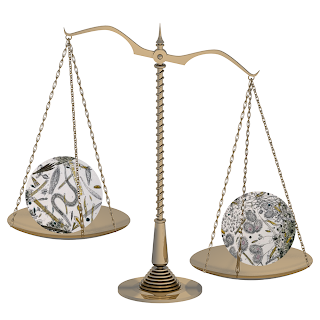gastrotich, from University of Washington web pages
For the past several weeks, I've been deeply engaged in reading Animal Earth, a fine book by Ross Piper. Very highly recommend; Piper writes lucidly and with a sense of humor, and the photographic illustrations are, to understate the case, superior.
The book brings home the extraordinary diversity of life at the microscopic level, calling attention to overlooked yet essential animal phyla such as Loricifera, ancient lineages of animals which the general public completely overlooks and is probably even entirely unaware of. Yet we share our planet with tens of thousands of such species, which easily outnumber us both in numerical terms and that of sheer biomass.
No one—even specialized biologists—knows much about these creatures, yet they form the essential underpinnings of life on the planet. Marine plankton—the larval stages of a staggering variety of arthropods, as well as other animals—are one of the planet's great microbiological reservoirs, creating the invisible understory of all—yes, all— marine life. Yet damage to plankton populations is difficult, if not impossible, to gauge, and methods for assessing the overall health of plankton populations present challenges of scale and complexity it is nearly impossible to evaluate, let alone overcome.
Large scale activities that result in gross, easily visible habitat destruction and the extermination of larger animal species generate the overwhelming majority of concerns about ecosystem damage. These are often the result of mechanical processes such as strip mining, deforestation, and overfishing. Yet the chemical pollution of biological microsystems may well turn out to be the greatest long-term threat to ecosystem health. Physical damage can, after all, be overcome; but if the foundational microbiology of a system is disrupted, any short-term recovery may turn out to be impossible.
The fossil record, especially the Burgess shale and other benthic (sea-floor) lagerstätten, demonstrate just how long many of these species have been with us; 500 million years and more. Their durability testifies not only to their resilience, but also how essential to ecosystems they are. No organism can persist in a habitat or body shape for that long unless it is performing essential roles for which it is, for all intents and purposes, perfectly adapted. Many of the smallest life forms we encounter in the world of microbiology fall into this category. These small life forms are the ones most likely to be compromised or destroyed by trace chemicals in their environment; amounts that seem insignificant to larger creatures represent massive doses on a microbial scale.
It's unlikely that the world will see a rush to the serious study of such tiny creatures any time soon; and while we continue to ignore them, the destruction of their populations seems assured.
The situation presents powerful arguments in favor of the most conservative approach possible to the introduction of new chemicals intended for widespread use and distribution, and stricter controls on the emission and control of all chemical waste processes of any kind, not only industrial, but also household wastes.




